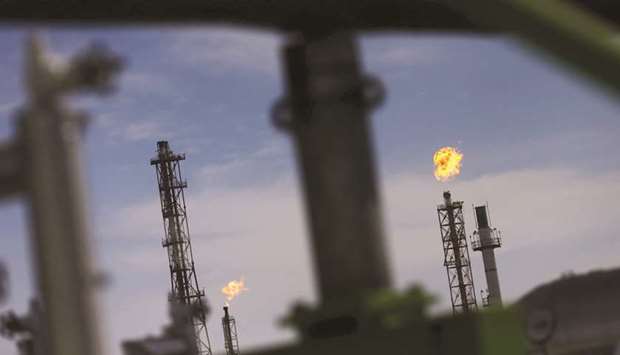President Andres Manuel Lopez Obrador said the Mexican economy still has time to recover after first-quarter data showed it contracted more than forecast in the beginning of his government.
Gross domestic product fell 0.2% from the previous three months in seasonally-adjusted terms, worse than the 0.1% decline estimated by economists surveyed by Bloomberg, and in line with April’s preliminary reading. From a year earlier, GDP expanded 1.2%, the national statistics institute said.
Latin America’s second-largest economy contracted despite faster-than-expected growth in the US, the buyer of 80% of its exports. Borrowing costs at a decade high and uncertainty about Lopez Obrador’s policies weighed on activity, as well as a drop in Petroleo Mexicano’s oil output.
Asked whether the disappointing performance would make it impossible for Mexico to grow 2%, near the top of the government’s expected range for this year, Lopez Obrador asked for time.
“We’re going to wait,” he told reporters at a morning news conference. “There’s time left.”
Economists are less hopeful. They forecast Mexico to grow 1.5% in 2019, less than the 2% expansion recorded in 2018, according to a Bloomberg survey.
“Real GDP growth in Mexico was admittedly modest in recent years, and we believe it will get worse in 2019,” Goldman Sach’s senior economist Alberto Ramos wrote in a note to clients. He added that risks to this year’s 1.5% growth estimate are “slightly skewed to the downside.”
Petroleos Mexicanos remains as a major concern for analysts who fear it could face another credit-rating downgrade after a cut by Fitch Ratings earlier this year. Pemex’s reputation has been damaged by 14 years of declining output and accusations of past corruption leveled by Lopez Obrador’s administration.
A January fuel shortage triggered by government crackdown on fuel theft as well as work stoppages due to strikes on the northern border also may have weighed on growth.
Service sectors including commercial activity, transportation, financial and media shrank 0.2% from the previous three months, according to the statistics institute. Industrial sectors including mining, construction and manufacturing fell 0.6%. Agriculture, livestock and fishing industries expanded 2.6%.
Analysts expect the central bank, which has been closely monitoring the slack in the economy, to cut interest rates toward the end of the year from a decade high 8.25%. The board earlier this month voted unanimously to keep borrowing costs unchanged after inflation exceeded the target range.

A view of Mexico’s national oil company Pemex’s refinery in Salamanca, in Guanajuato state, Mexico (file). Pemex’s reputation has been damaged by 14 years of declining output and accusations of past corruption levelled by Lopez Obrador’s administration.


